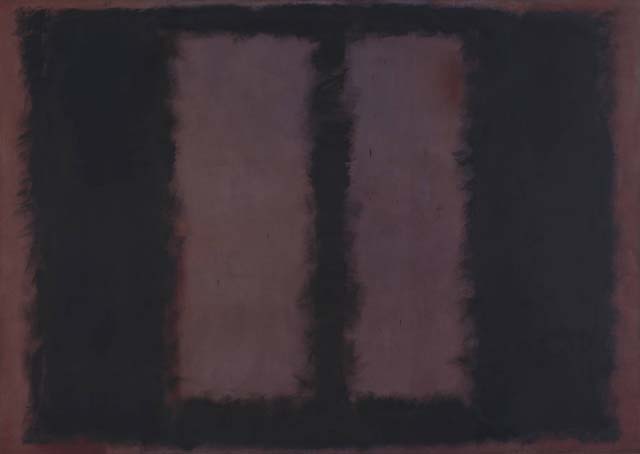| Black on Maroon | |
|---|---|
 |
|
| Artist | Mark Rothko |
| Year | 1958 |
| Medium | Oil paint, acrylic paint, glue tempera and pigment on canvas |
| Location | Tate Modern, London |
| Dimensions | 105 in × 150 in |
| 266.7 cm × 381.2 cm | |
| Mark Rothko Famous Paintings | |
| White Center (Yellow, Pink and Lavender on Rose), 1950 | |
| Four Darks in Red, 1958 | |
| Untitled (Black on Grey), 1970 | |
| No. 3/No. 13 (Magenta, Black, Green on Orange), 1949 | |
| Orange, Red, Yellow, 1961 | |
| Black on Maroon<, 1958 | |
| Complete Works |
Black on Maroon is a painting by the Latvian-born American artist, Mark Rothko. He produced it in 1958 as the first in a series, and it sits squarely within his usual style of abstract expressionism. The painting was not used in the way originally intended, but Rothko presented Black on Maroon to the Tate Gallery in London in 1968, where it still hangs.
Style & Technique
Rothko originally intended Black on Maroon to be a fairly light work, but as time went on, he adopted an increasingly solemn tone. Eventually, this darkness progressed so far that he felt compelled to abandon his initial series altogether and begin again, using the mixture of red, maroon, and black which can be seen in the finished painting.
Rothko also moved away from his previously characteristic rectangular motifs, instead including more open structures which gave the impression of windows. Rothko was influenced, albeit by his own admission not consciously, by the work of the Renaissance painter, Michaelangelo, in Florence’s Medicean Library. Both artists’ paintings used architectural influences to create a somewhat overbearing impression.
Background
Rothko painted Black on Maroon in order to fulfill a commission for an upscale New York City restaurant, the Four Seasons. The proprietor of the restaurant, which was situated in the Seagram Building skyscraper on Park Avenue, wanted murals for a small dining room. Black on Maroon formed a part of a whole series of murals for the Four Seasons, but in the event, they were never installed.
Rothko became unhappy with the idea of his work being seen only by a privileged, fashionable clientele, and the series remained in his studio for several years. In 1965, he donated a group including Black on Maroon to the Tate, pleased at the idea that they would hang in the same gallery as paintings by the British landscape painter, J. M. W. Turner.